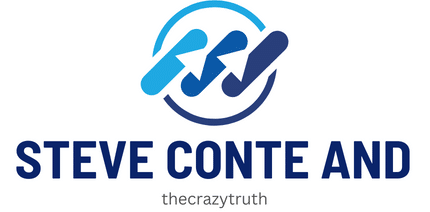How Can Nasal Breathing Techniques Benefit Athletes in High-Intensity Sports?

In the world of high-intensity sports, the focus often leans towards strength, endurance, and speed. Yet, an equally important aspect to consider is how we breathe. While it may seem counterintuitive, the way we breathe can significantly impact our performance, particularly when it comes to nasal breathing.
The Basics of Breathing
Breathing is something we do unconsciously, automatically. Oxygen flows in, carbon dioxide flows out. However, if we delve deeper, we will find that the process is complex and has far-reaching consequences on our athletic ability.
A lire également : What’s the Latest on the Use of Exergaming in Rehabilitation for Sports Injuries?
When we breathe in, air travels through our nose or mouth, down the windpipe, filling the lungs. In the lungs, oxygen gets absorbed into the blood, which is then transported to the muscles working hard during exercise. As we exhale, we remove carbon dioxide, a waste product of metabolism, from the body.
While both nasal and mouth breathing can fulfill this essential function, they are not equally efficient or beneficial, particularly for athletes engaged in high-intensity sports.
En parallèle : What’s the Best Approach to Developing Agility and Quickness in Wheelchair Basketball Players?
Why Nasal Breathing?
Nasal breathing, as the term suggests, involves inhaling and exhaling through the nose. This method of breathing offers multiple advantages over mouth breathing, especially in the context of sports and exercise.
By breathing through the nose, the air that enters our body is not only filtered of harmful particles but also warmed and humidified, making it easier on the lungs. Furthermore, nasal breathing produces nitric oxide, a molecule that enhances the body’s oxygen uptake. This means that the same breath taken through the nose will provide more oxygen to the muscles than one taken through the mouth.
The result? Increased efficiency and stamina, better pace and rhythm control, and improved athletic performance. Nasal breathing can also promote better body and breath control, leading to improved focus and mental clarity – a critical aspect in any high-intensity sport.
Nasal Breathing and Exercise Performance
The simple act of breathing through your nose can enhance your exercise performance dramatically. By helping you to take in more oxygen with each breath, you’re able to fuel your muscles more effectively, resulting in better performance and endurance.
Training yourself to breathe through your nose during exercise might feel awkward or uncomfortable initially, but the benefits are worth the effort. For one, the increased oxygenation can lead to stronger, more powerful muscles and better performance in high-intensity sports.
Furthermore, the use of nasal breathing during training can help runners maintain a steady, rhythmic pace, which is key to efficiency and endurance. By focusing on the rhythm of their breath, runners can maintain a steady pace and regulate their energy expenditure more effectively.
Implementing Nasal Breathing in Training
Making the switch to nasal breathing during high-intensity workouts or athletic training isn’t something that happens overnight. It requires conscious effort and a bit of practice, but the benefits it offers makes it worth the while.
Start by focusing on your breath during low-intensity exercises or warm-ups. Pay attention to the air entering and leaving your nose. Gradually, try to maintain this nasal breathing pattern during more intense workouts. Remember, it’s normal for it to feel challenging at first. Over time, as your body adapts, you’ll find it easier to sustain.
Breathing for Athletic Success
When it comes to success in high-intensity sports, every little bit counts. From the food athletes eat to the way they train, every aspect is fine-tuned to enhance performance. Breathing, too, should be part of this strategy. By focusing on nasal breathing, athletes can take in more oxygen, maintain a better rhythm, and ultimately, perform at their peak.
In conclusion, nasal breathing is more than just a technique—it’s a tool for athletic success. It’s about time we paid more attention to it in the realm of high-intensity sports.
The Science Behind Nasal Breathing in Athletes
To understand the benefits of nasal breathing in athletes, we must first look at the science behind it. When we breathe through our nose, the inhaled air is forced to take a longer, more circuitous route before reaching the lungs. This allows for better absorption of oxygen, which is crucial for athletes who need to maintain their stamina and performance during high-intensity workouts.
During nasal breathing, the air gets filtered, warmed, and humidified, which makes it easier on the lungs. This is especially beneficial for athletes, as it reduces the risk of respiratory problems and enhances their overall performance.
Another important aspect of nasal breathing is the production of nitric oxide, a vital molecule that promotes vasodilation – widening of blood vessels – in the respiratory system. This leads to an improved oxygen supply in the muscles, thus boosting athletic performance.
On the other hand, mouth breathing often leads to over-breathing and a higher heart rate, which can cause unnecessary stress on the body, especially during intense workouts. This might lead to a feeling of ‘air hunger’, a common symptom in many athletes who breathe through their mouths.
The Benefits of Nasal Breathing Techniques for Athletes
Implementing nasal breathing techniques can result in a host of benefits for athletes involved in high-intensity sports. As we breathe nose in and out, the body’s parasympathetic nervous system, which helps control rest and relaxation, is activated. This can lead to a reduction in heart rate and anxiety levels, thus leading to better performance.
One of the key advantages of nasal breathing is its effect on diaphragmatic breathing. This form of deep breathing engages the diaphragm, a muscle that plays a crucial role in respiration. When we breathe through our nose, we are more likely to engage in diaphragmatic breathing, which can enhance muscular strength and endurance.
Nasal breathing is also known to improve the body’s utilization of carbon dioxide. Contrary to popular belief, carbon dioxide is not just a waste product. It is vital for the release of oxygen from the red blood cells to the muscles. A higher level of carbon dioxide in the body results in more oxygen supply to the muscles, thus improving athletic performance.
Moreover, incorporating nasal breathing techniques into strength training has proven beneficial. By controlling breath through the nose, athletes can better manage their response to physical stress, leading to improved performance and recovery.
Conclusion: Nasal Breathing — A Game-Changer for Athletes
To sum up, nasal breathing is far from a trivial aspect of athletic training. The numerous benefits it offers, from increased oxygen intake to enhanced performance and recovery, are evidence of its potential impact on high-intensity sports.
Nasal breathing’s role in activating the parasympathetic nervous system, promoting diaphragmatic breathing, and improving carbon dioxide utilization is vital for athletes. By making a conscious effort to switch from mouth breathing to nasal breathing, athletes can significantly enhance their performance and overall athletic success.
In conclusion, the often overlooked practice of nasal breathing can be a significant game-changer for athletes. It is not just about how hard you train or the quality of your diet; it’s also about how you breathe. The ability to effectively control and utilize one’s breath through the nose can be the key to unlocking one’s full potential in high-intensity sports. Therefore, incorporating nasal breathing techniques into regular training and exercise routines should be a priority for every athlete.
